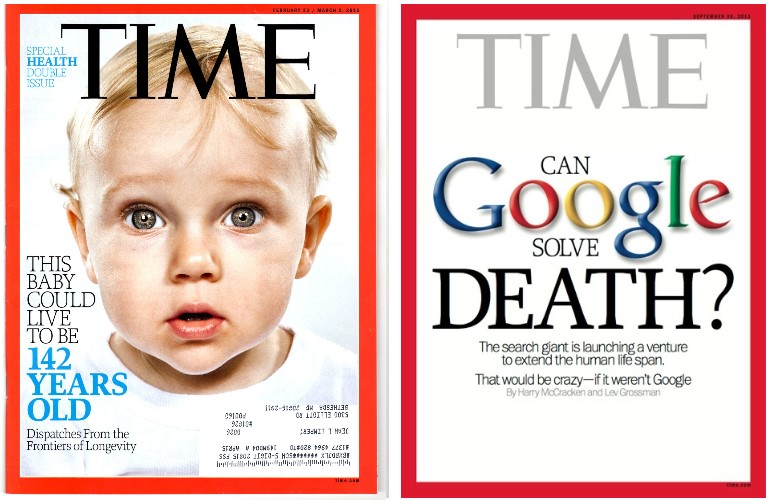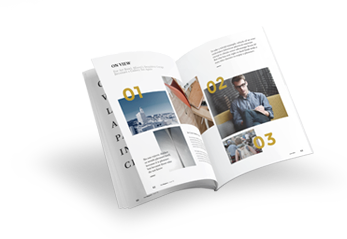This is a two-part article on the emerging longevity industry, serving as an introduction to the field of geroscience and the longevity industry. Part 2 will serve as a landscape overview of the industry, focusing on specific key technologies and sectors, including global market and scientific trends, the AgeTech market, and a case study of an ideal P3 (personalized, precision and preventative) medicine clinic implementable today given the field’s current scientific and technological landscape.

When you hear the term “anti-aging” you probably think of things like facial creams, cosmetics, healthy lifestyle, fitness and organic foods. At the most extreme end, perhaps you picture luxury medical treatments – more intensive and private versions of normal medical treatments, more expensive than they are truly advanced, and not so much next-generation as they are elite versions of standard disease treatment and medical care. This was the scope of the anti-aging brand during the last decades, an industry not backed by real, credible or validated science, with a rather modest effect on health and quality of life, but nearly no effect whatsoever on the real ageing process. During that same time, quietly and out of the public eye, there emerged the astounding but not-well-known branch of biomedicine and science that today we call “Geroscience,” or the application of knowledge gained from biogerontology (the study of the biology of ageing) for the development of practical therapies to slow and reverse age-related forms of cellular damage.
This field has made astounding progress in slowing and reversing the ageing process in lab animals throughout the last 20 years, managing to double the lifespan of lab rats and increase the lifespan of worms by 1000%. We now have a concrete scientific understanding of how we age on a cellular and molecular level, of the specific forms of damage that accumulate to cause ageing, and of the many diseases that it directly causes. And, more importantly, companies, institutions and doctors today are making the very first steps in translating these therapies into practical clinical use by human patients. These mark the very first steps toward a majorly-disruptive global paradigm shift in 21st century healthcare and medicine from disease treatment to disease prevention, with the power to prevent the majority of chronic diseases afflicting humans today, including cancer, heart disease, diabetes and dementia, in one fell swoop, by targeting the ageing process itself.

Today the transfer of geroscience from the lab to human clinics is known as P3 (precision, personalized, preventative) medicine, and takes the form of those few preventative treatments that have already made their way into actual clinics, tailored to patients based on their specific genetic, disease and health profiles. Today they mainly consist of advanced diagnostic and prognostic technologies combined with personalized, precision preventative therapies that are tailored to patient-specific prognostic and diagnostic results. P3 medicine clinics are distinctly different from what might be called luxury clinics, where such technologies are not commonly used. P3 medicine clinics do not invest time or money into creating the atmosphere of elite exclusivity, into imposing their clients to take non efficient or placebo treatments. They do not need to “gild” their clinics, because the technologies they employ are not just intensified versions of existing standard-of-care medical technologies, but real advanced and next-generation medical technologies that can deliver advanced clinical performance when compared to standard-of-care, one-fits-all medical technologies.
These personalized disease prevention technologies – while modest in their effect today in comparison to the oncoming arrival of real geroscience therapies – are the leading edge of what we can do today to slow the damaging effects of ageing. But P3 medicine is just the beginning, the very first few steps into what we all will come to know as the age of longevity, and the birth of a true longevity industry, where the technologies and therapies of geroscience are translated into human medicine, making the global paradigm shift from treatment to prevention as the standard-of-care for every human being.
This is definitely not the anti-aging industry of the 20th century. This is the geroscience of today, the death of what was once an empty marketing term “anti-aging” without any scientific validity and its rebirth into a rapidly-accelerating field on the very forefront of modern biomedicine, backed by some of the world’s most elite scientists, companies, institutions and individuals. From several cover-stories in TIME Magazine, to the recognition of an emerging longevity industry at both the 2015 and 2016 World Economic Forum at Davos, to two landmark 2016 longevity conferences “Ageing societies” and “The business of longevity” in London and San Francisco by the respected, highly conservative and policymaking economic journal The Economist (with more planned next year in Asia and Europe). The world’s premier media outlets are too jumping aboard the bandwagon to defeat aging via validated science and technology.
The Silicon Valley elite are emerging with public pronouncements in favor of the desirability and feasibility of launching an all-out assault on aging within the next decade, including Jeff Bezos (CEO of Amazon), Sergey Brin and Larry Page (Co-founders of Google), Mark Zuckerberg (CEO of Facebook), Bill Maris (Google Ventures) and Peter Thiel (Founders Fund). Indeed, Google itself has even launched a company, Calico, focusing explicitly on translating cutting edge geroscience into real-world therapies to slow and reverse aging. These high-impact individuals and institutions are helping to usher in the largest paradigm shift in healthcare and modern medicine of the 21st century, away from the uphill battle of ineffective single-disease treatment and toward multi-disease prevention.

While investment in the longevity industry is currently being dominated by Silicon Valley investors and entrepreneurs, much of the hardcore science is happening in Europe, in the laboratories of advanced scientists in Switzerland, Germany and the UK, among others. But the European biotech ecosystem suffers from proportionately less investment, entrepreneurship, and the clinical translation and practical implementation of geroscience therapies, despite the fact that it is leading the forefront in terms of actual science. If Europe becomes more actively involved in geroscience investment and entrepreneurship, it could very well witness a rapid rise in this industry at the same pace as is happening in Silicon Valley.
Europe is also leading in terms of the fractional application of P3 medicines, and are currently in some cases even more advanced than the P3 medicine technologies available in the U.K. and U.S. The U.S. doesn’t possess any substantial advantages in geroscience or P3 medicines with respect to European countries, which is why Europe should use its core advantage in these arenas to elevate themselves in terms of investment and entrepreneurship in the emerging longevity industry. The real factor holding Europe back from fully participating in the emerging longevity industry is not a lack of promising scientific and technological opportunities. It is merely a way of thinking, and a national awareness of what is possible on the horizon of geroscience and P3 medicine. This means, however, that a shift in national thinking to realize these possibilities might very well be on the horizon, and would certainly be realizable within rather short timeframes, such as within the coming year, which is when the largest opportunities for early investment and future growth are going to occur.
2017 will mark the beginning of a substantial investment boom in the longevity industry and the beginning of global health care reform away from treatment and toward prevention. It will be the year that marks the beginning of the end for the superficial and unscientific anti-aging brand, the validation and popularization of geroscience and the birth of an age of healthy longevity. There are many conferences and events related to longevity and geroscience planned throughout Europe in the coming year, signalling a shift in public thought throughout the region that prefaces a coming boom in European investment and entrepreneurship in the longevity industry. If you wish to remain apprised of ongoing advancements in geroscience, P3 medicine and the longevity industry then follow our articles and events. Keep an eye on these exciting trends in order to put yourself in the best possible position to live long enough to witness the coming age of health, where each passing day greets you with additional health and longevity technologies rather than worsening disease and frailty, where each passing year brings additional two years of life expectancy.
PART 2
The Paradigm Shift From Disease Treatment to Personalized, Precision Disease Prevention
While the longevity industry has only really emerged within the past few years, it already has a number of big-name players. Take Calico for example, a venture launched by Google in 2013 with the explicit goal of extending healthy longevity and tackling age-related diseases. Calico’s operations are very stealth, but from what has thus far been publicly disclosed, we know that it has a very long-term mission, and that it is setting its sights on treating the process of aging itself as a disease. Headed by CEO Arthur D. Levinson, Chair of Apple, the company has had investments of $350 million by both Google and AbbVie, each with the option to invest $500 million at a later date.
Google is not alone. Take Human Longevity Inc. (HLI), founded by genomics pioneer J. Craig Venter (one of the men behind the Human Genome Project), Peter Diamandis and Robert Hariri. HLI’s strategy is to build the largest and most comprehensive database linking human genotypes, microbiomes and phenotypes. Using this database, HLI hopes to use Big Data analysis to discover the genetic and molecular basis underlying disease and aging. In order to facilitate this type of analysis, HLI has hired Franz Och, the former head of Google Translate, to be its Chief Data Scientist. It has thus far received just under $300 million in funding, and stands as one of the future leaders of the industry.
A more recent example is Unity, a startup founded in 2009, that received a whopping $116 million from investors during its second round of equity investment in 2016, one of whom is the current CEO of Amazon, Jeff Bezos. Unity aims to clear the body of senescent cells – cells that have lost the ability to divide and hang around the body emitting damaging cellular byproducts. They aim to translate existing laboratory research, in which clearance of the senescent cells of mice extended their healthy lifespan and their maximum lifespan by a substantial 30%, into practical therapies for use in human patients. Unity stands out as a promising geroscience venture due to the massive amounts of funds that they were able to acquire despite not having had any human clinical trials yet, backed solely on the credibility of their science.
These examples serve to show that, what was once considered fringe science, is now a veritable industry being led by some of the world’s top entrepreneurial visionaries. But beyond the work that has been described as the ‘emerging longevity industry’, there exists two other markets which, while not being part of the “true” longevity industry per-se, are distinctly related and convergent with it. These are the AgeTech market and the P3 medicine market.
P3 (personalized, precision and preventative) medicine encompasses the use of therapies that are personally tailored to individual patient populations based upon their own unique genetic profiles, which in turn determines how they respond to a given treatment. Because patient response is a highly variable phenomenon, drugs do not work equally well for all patients. By combining genetic testing with tailored treatments, medicine as a whole can be vastly improved. By combining preventative therapies (therapies that are given to prevent disease rather than treat them after the fact) , such as geroscience, with personalized therapies, P3 medicine is born. While not as new to the scene as the longevity industry, P3 medicine is still an emerging industry with great potential that needs to be fostered in order to mature into a strong, impactful industry.
P3 medicine is still a somewhat advanced concept that has not yet been integrated into traditional medical and healthcare systems in the developed world. The trend is heading in that direction, however, as more and more evidence on improvements in clinical outcomes as a result of P3 medicine accumulate. Despite this fact, the necessary science and technology for a first-generation P3 medicine clinic is available now and can be implemented for those who can afford it. Soon P3 medicine will become the standard-of-care in developed nations, covered by the majority of citizens’ insurance plans. Such a clinic would consist of a suite of diagnostic tests to measure various parameters of bodily health, as well as those parameters that partly determine patient-specific responses to treatments, which are correlated via data analysis software to patient specific therapies and/or therapeutic doses that are chosen so as to have maximum therapeutic effect for each of the clinic’s patients.
Examples of diagnostic technologies that could be implemented today include genetic marker testing (i.e. sequencing and determination of genetic markers of health and disease), whole-genome sequencing, whole-epigenome sequencing, whole-body MRI, telomere-length measurement and measurement of a suite of blood-based markers of disease and health. Examples of personalized therapies that could be implemented today include patient-specific nutraceutical and small molecule cocktails delivered at patient-specific doses, personalized diet and behavioural recommendations, and cell and gene therapies once they are approved for use by developed nations’ regulatory agencies.
Both geroscience and P3 medicine are part of the same paradigm shift in modern medicine and healthcare, away from single-disease treatment after the fact, and toward personalized multi-disease prevention by targeting the biological processes that underlie and lay the foundations for the diseases of middle and old age. While P3 medicine and geroscience are distinct fields, their union – that is, personalized geroscience therapies – is going to be one of the key trends behind the eventual success of the longevity industry, and the best foreseeable means of maximizing the therapeutic effect and success of geroscience therapies.
Meanwhile, demographic ageing (i.e., the ongoing and accelerating increase in the size of developed nations’ elderly demographic) continues apace and may reach levels that make it necessary for older demographics to remain part of the workforce. This is happening before the longevity industry bears its fruit in the clinic. And so went enter AgeTech… The AgeTech market encompasses any non-biomedical product or service that helps seniors stay active within society and cope with declines in productivity and functionality. Much of the current AgeTech market consists of assistive IT products and services that make it easier to remain actively engaged in society and to remain productive in the workplace.
Due to the process of demographic ageing, the potential size of this market is poised to explode over the course of the next few decades. And, because elderly workers are expected to have to remain a part of the workforce in order to prevent economic collapse, due to the eventually-unsustainable costs of elderly securities like Medicaid and Medicare, it is in businesses’ best interest to begin integrating such technology into the workplace.
Take, for instance, BMW, who chose workers of an average age of 47 for one of their assembly lines as an experiment to determine what kinds of workplace changes would be required to sustain productivity in the face of an older demographic of workers. The workers making up this assembly line are 8 years older than the average BMW production line employee and the program, titled Today for Tomorrow, was designed to simulate the kind of workforce they expect to employ in a few years time. BMW managers, in coordination with the production line employees, instituted 70 changes to the workplace to accommodate this older workforce and the team increased its productivity by 7% throughout the year. In the end, the older workforce became just as productive as the younger production line teams through the workplace changes they instituted.
It is not just industry that is taking note. At the 2015 White House Conference on Aging (a once-per-decade conference involving parties from a variety of sectors serving older citizens), the Obama administration declared that they see technology as the future of old age. For every one of the four topics that were focused upon – including promoting healthy aging, building long-term services and support, promoting elder justice and preventing abuse and improving retirement security – advancements in technology came out as the key solution. BMW’s project should serve as an example for every business who can expect to be employing a workforce with increasing numbers of older workers. The AgeTech industry is going to be their key to maintaining workforce productivity in the face of demographic aging in close times to come.
Thus, we see that the longevity industry is still young but growing up fast, and that in the meantime, we have a number of distinct but related and convergent fields and industries, like P3 medicine and AgeTech, to help us along the way until the longevity industry really begins to bear its fruit in the clinic. P3 medicine can contribute to the minimization, but not the true prevention, of age-related disease and AgeTech can help the elderly demographics of developed nations stay active and productive in society, remaining in the workforce for long enough and with enough productive functionality to stage off the demographic ageing crisis that threatens to cripple, if not collapse, whole economies due to unsustainable increases in nations’ old age dependency ratios.





